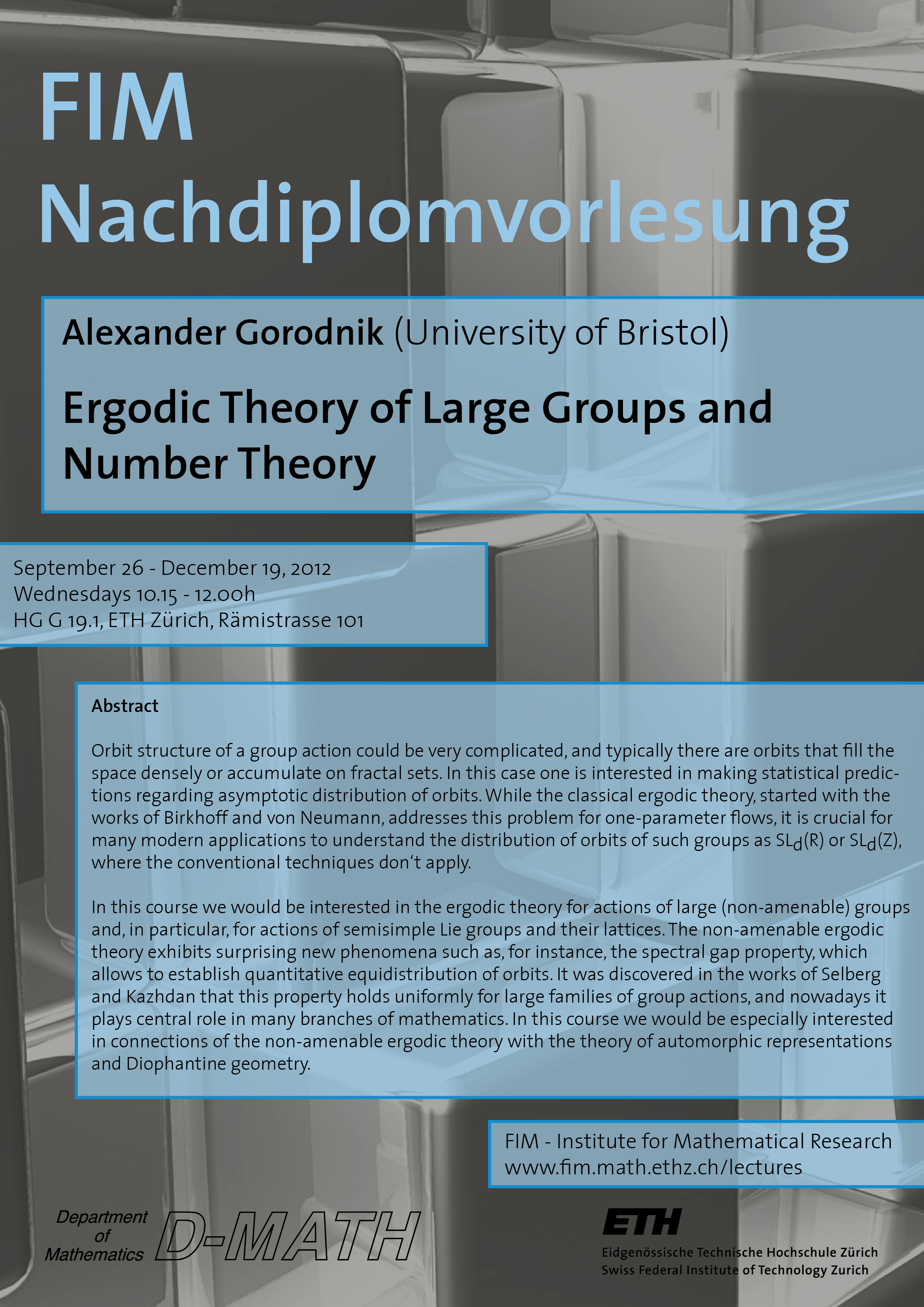Past lectures
Ergodic Theory of Large Groups and Number Theory
Prof. Dr.
Alexander
Gorodnik
University of Bristol
September 26 -
December 19, 2012
Date and time: Wednesdays, 10:15 - 12:00
Location: HG G 19.1
Abstract
Orbit structure of a group action could be very complicated, and typically there are orbits that fill the space densely or accumulate on fractal sets. In this case one is interested in making statistical predictions regarding asymptotic distribution of orbits. While the classical ergodic theory, started with the works of Birkhoff and von Neumann, addresses this problem for one-parameter flows, it is crucial for many modern applications to understand the distribution of orbits of such groups as SL_d(R) or SL_d(Z), where the conventional techniques don't apply.
In this course we would be interested in the ergodic theory for actions of large (non-amenable) groups and, in particular, for actions of semisimple Lie groups and their lattices. The non-amenable ergodic theory exhibits surprising new phenomena such as, for instance, the spectral gap property, which allows to establish quantitative equidistribution of orbits. It was discovered in the works of Selberg and Kazhdan that this property holds uniformly for large families of group actions, and nowadays it plays central role in many branches of mathematics. In this course we would be especially interested in connections of the non-amenable ergodic theory with the theory of automorphic representations and Diophantine geometry.
Selected topics:
1. Spectral gap property and Kazhdan property (T).
2. Automorphic representations and Selberg property (tau).
3. Quantitative ergodic theorems from semisimple groups and lattices.
4. Counting for congruence subgroups and applications to sieves on homogeneous varieties.
5. Quantitative ergodic theorems and Diophantine approximation on homogeneous varieties.
